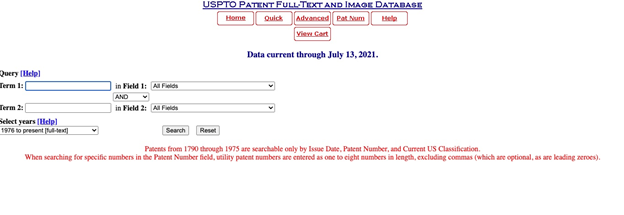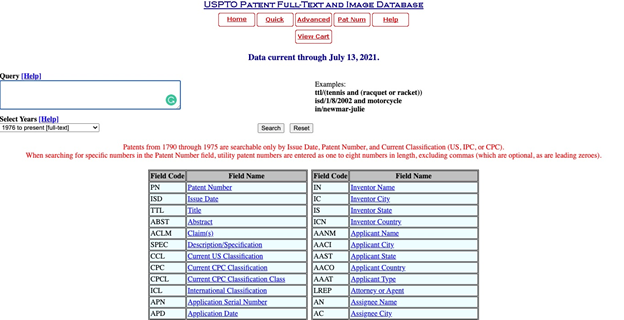Think you’ve come up with the next best idea? That’s great!
We are guessing you’re reading this because you think that idea has some serious potential to make money and you want to patent it before someone else can claim the idea as their own.
Well, we have some good news and some bad news.
We will give the bad news first. You can’t patent an idea.
According to LegalZoom, “the invention itself has to be produced or a patent application containing the invention has to be filed with the U.S. Patent and Trademark Office (USPTO).”
Now that the cat’s out of the bag, here is the good news: you can create a prototype or model that allows you to move forward with your patent application.
But that’s just one step in the process. In order to help you through the journey of patenting, we have created this guide.
Follow along to get the ball rolling on your idea.
The Easy Parts of Patenting an Idea
The idea of patenting something can seem like a daunting process. How do you even go about claiming an idea is legally yours so that no one else can take it?
Thankfully, when it comes to patents, the entire process isn’t complicated. And when it does get complicated, you can hire an attorney to guide you. Or, you can get a trusted book to help you with the process.
If you opt to do it on your own, we recommend the “Patent It Yourself” book by Nolo.

This book walks you through the steps of preparing and filing your patent application including:
- Information about patent laws
- Information about the latest USPTO filing rules
- How to perform a patent search
- How to file a regular or provisional patent application
- How to market and license your invention
We will talk more about the book down below.
Here is how to get the process started.
Search the United States Patent and Trademark Office (USPTO)
Before you move forward with investing money or even more time into your idea, you want to use the USPTO search engine to make sure your idea hasn’t already been patented by someone else.

Here you can conduct a quick search that gives you some information about potential already-existing ideas that are similar to yours.
Or you can do a more in-depth advanced search that allows you to really ensure that your idea hasn’t already been done.
A more in-depth search is likely something you will have your patent attorney do, but a quick initial search is important before paying your attorney a lot of money to go deeper.

Keep records of your idea and the process
When you are looking to patent something, it is important that from day one of your idea, you keep thorough records of how you came up with it.
You also want to have a record of your step-by-step process of turning that idea into reality. This record will provide you with proof that you came up with the idea on your own, and this will become important when it comes time to file for the patent.
Have a journal or notebook that you dedicate to your idea and the process including the original idea, any changes/corrections to it, and anything else that happens prior to you applying for the patent. It may be a good idea for you to sign and date every entry in this notebook or journal and if possible, have witnesses sign as well.
Keep records of who you share the idea with
Equally as important as keeping records of the process of turning your idea into a patent is keeping records of who has been granted access to your idea. The best way to do this is with non-disclosure agreements (NDAs) from anyone that may be involved in the project including friends, employees, contractors, and more.
You can find free templates of NDAs online. Make sure they work for you and your idea and have everyone you share the idea with sign one.
The Difficult Parts of Patenting an Idea
As much fun as the idea that you’re looking to patent may be, there are some steps you need to take before you can get to the actual patent, and some of them are difficult.
Paperwork
Anything that involves legal paperwork can get complicated. And patenting is no exception. In order to do things properly and legally, all of the paperwork for your patent must be done correctly.
And if this is your first time patenting something, that means the legal process is completely new to you.
That’s why we highly suggest hiring a patent attorney to do the hard work for you. Yes, this is something that will cost you a decent sum of money, but if you feel your idea is really that good, then it is worth investing in a patent attorney.
We will go into more detail about this below.
Creating a prototype or model
Since you can’t patent an idea, you will need to create some sort of prototype or model to move forward with your patent. This provides you with something tangible that you can use later down the line when you are looking for potential investors.
Additionally, a prototype helps you to determine whether your idea will work. If you struggle to put together a prototype, then you need to go back to the drawing board before you even think about applying for a patent.
The prototype can come in a few different forms:
- Drawing
- Mock-up 3-D model
- Fully working model (either real-life or a computer-rendered one)
This part of the process is a challenging one. It is the first time that you find out whether your idea can become more than just an idea, or if trying to make it a reality is where the idea dies.
If prototypes and models aren’t your forte, then you want to hire someone you trust to make one for you. Just be sure to have them sign an NDA before doing so.
Step 1: Hire a Patent Attorney
You can go through the process of patenting without an attorney, but it’s not something we recommend. Patents are a complicated process and every step needs to be done legally or else you run the risk of all your work going to waste in legal battles.
If you have the money to afford an attorney, it is the first step we suggest taking in the patent process.
However, it is important to note that not all patent attorneys are created equal. Thus, it is your job to do your due diligence and find an attorney that has the right qualities.
The Qualities You Want in Your Patent Attorney
Success stories
You don’t want a patent attorney who has never successfully helped a client patent something. Be sure to find out how much experience this attorney has in writing patents that have been issued. You want someone who has gone through the bumpy roads of patents and come out successfully at the end.
Experience with litigation
There may come a time when you have to defend your patent in court, so you want an attorney on your side who has experience with this. You may find yourself defending your intellectual property and your lawyer needs to be someone who can write your claims well to help you win.
Strong communication
There are a lot of steps along the way and you need an attorney who will keep you in the loop as to what is going on.
In addition to that, many people find that the initial filing of a patent results in a rejection. You want a lawyer who takes that rejection, calls the patent examiner, and sets up a meeting to find out why your patent was rejected and what needs to be done for it to be accepted.
You don’t only want a lawyer who will set that meeting, but you want one who will conduct that meeting in a cool, calm, and collected manner.
Efficiency
When you’ve got an attorney charging you hundreds of dollars an hour, you want to trust that he or she will be as efficient as possible and get things done in a timely manner.
Strong writing skills
This one may come as a surprise, but it is important that your patent attorney can create patent applications that are clear. Determine this by asking to see some of the prior ones he or she has written. If you understand them, then the attorney’s writing skills should be strong enough to write your application.
Step 2: If You Want To DIY, Get The Book
If you’re instead opting for the DIY route to save yourself money, then you want to be sure that you have the tools and guidance you need to adventure on this journey alone.
“Patent It Yourself” is a book created by two patent attorneys that take you through the process of applying for a patent, and it is updated regularly with current information and instructions so you know that you are always working with what’s currently happening in the patent world.
Available as both a book and an ebook, “Patent It Yourself” features all the information you need as well as forms so that you can do the following:
- Correctly conduct a patent search
- Understand the potential of your idea
- File a provisional patent application
- Prepare a patent application
- Respond to patent examiners
- Create the prototype or mockup correctly
- Protect your rights
- Deal with infringements
- Market your invention
- License your invention
The eBook is available for $39.99 and you can get a bundle with both a physical book and the eBook for $44.99.
The purchase of the book also comes with access to a website where you can download all the forms you need.
Step 3: Conduct a Patent Search
This is arguably the most important part of the patent process.
Has your idea already been patented? If so, knowing that ahead of time will save you a lot of time, money, and potential legal trouble.
Because the process of the patent search is so important, and one that can take a great deal of time, many people leave it to their patent attorney to do.
Though it will cost you some serious money, as the search takes time and time is money for attorneys, it may be better for you to cough up the money rather than attempt the search on your own with no prior knowledge of what exactly to look for and how to even do the basic parts of the search.
Some people opt to do a quick search on their own first and then hand things over to their patent attorney to do a more thorough check.
Doing a Patent Seach On Your Own
If you want to do it entirely on your own, or do an initial search before you pay your attorney to dive deeper, here are some steps to take when it comes to doing a patent search. These steps are the ones outlined by the United States Patent & Trademark Office (USPTO).
It’s called the Seven Step Strategy and goes as follows:
- Brainstorm terms to describe your idea/invention based on its purpose and use
- Search initial patent classifications via the USPTO’s site search box
- Once you’ve determined the relevant classification, verify its relevancy to your idea/invention
- Get the patent documents under this classification using USPTO’s Patents Full-Text and Image database
- Conduct an in-depth review of the relevant patents and check references
- Repeat the above steps, but this time using USPOTO’s Applications Full-Text and Image database
- Broaden your search by trying other keywords and other sites
Step 4: Create a Prototype or Model
As we mentioned above, you can’t patent an idea. That’s why this step is such an important part of the process.
This is the step in which you turn your idea into something tangible. With this, you can start filling out the patent application.
If you aren’t sure how to turn your idea into a prototype or a model, you want to hire someone who can. You can opt for your prototype to be something physical or a visual model that represents your idea. Which route you go with your model depends upon what your idea is.
This is the step in which you get a better understanding of your idea. How does it work? What does it look like? Is this something people want?
Step 5: Complete The Application
You’ve done all the steps to get to this point: the actual application. You have your prototype. You’ve conducted the searches. You’ve found that your idea is original and ready to share with the world.
But first, you’ve got to do the paperwork.
Most inventions fall under the category of utility patents, the type of patents that are given out to inventions that are deemed practical.
This is a step that you will largely be working with your attorney to complete. In fact, he or she may end up doing this entire process (that’s what you hired them for, isn’t it?). They may deem it appropriate for you to first file a provisional application before the actual patent application.
Why?
Because a provisional patent provides you with a deadline to complete the final application, which is typically 12 months from the filing of the provisional application. With the filing of the provisional application, you automatically have the label “patent pending” on your invention, which legally protects you from any sort of infringement.
Once you have this submitted, you can get started on the actual patent application.
The application needs to provide full detail about the following
- What your idea/invention does
- How it is made
- How it can be used
- How it provides solutions
- How it is a progression of a product
- How it is put together
- What it looks like
Though you can apply by hand, it is recommended to save yourself the $400 and the time and do it electronically. The basic filing fee for a utility patent is $320, but check out the USPTO fee schedule here to see what your patent application may cost.
Step 6: Start Marketing
Now that you have the “patent pending” status, you are legally allowed to start marketing your invention.
However, if you did not file the provisional application, you cannot begin marketing.
If you did, then great. You can get started. This is a great opportunity to spread the word about your new invention and get the hype built up so that once that patent is approved, you can go full-steam ahead with your invention.
Note that the “patent pending” status only protects you from infringement if the patent ends up getting issued. If an issue occurs before then, it is within your rights to send a cease-and-desist letter. Otherwise, wait until the patent application is approved to take legal action.
